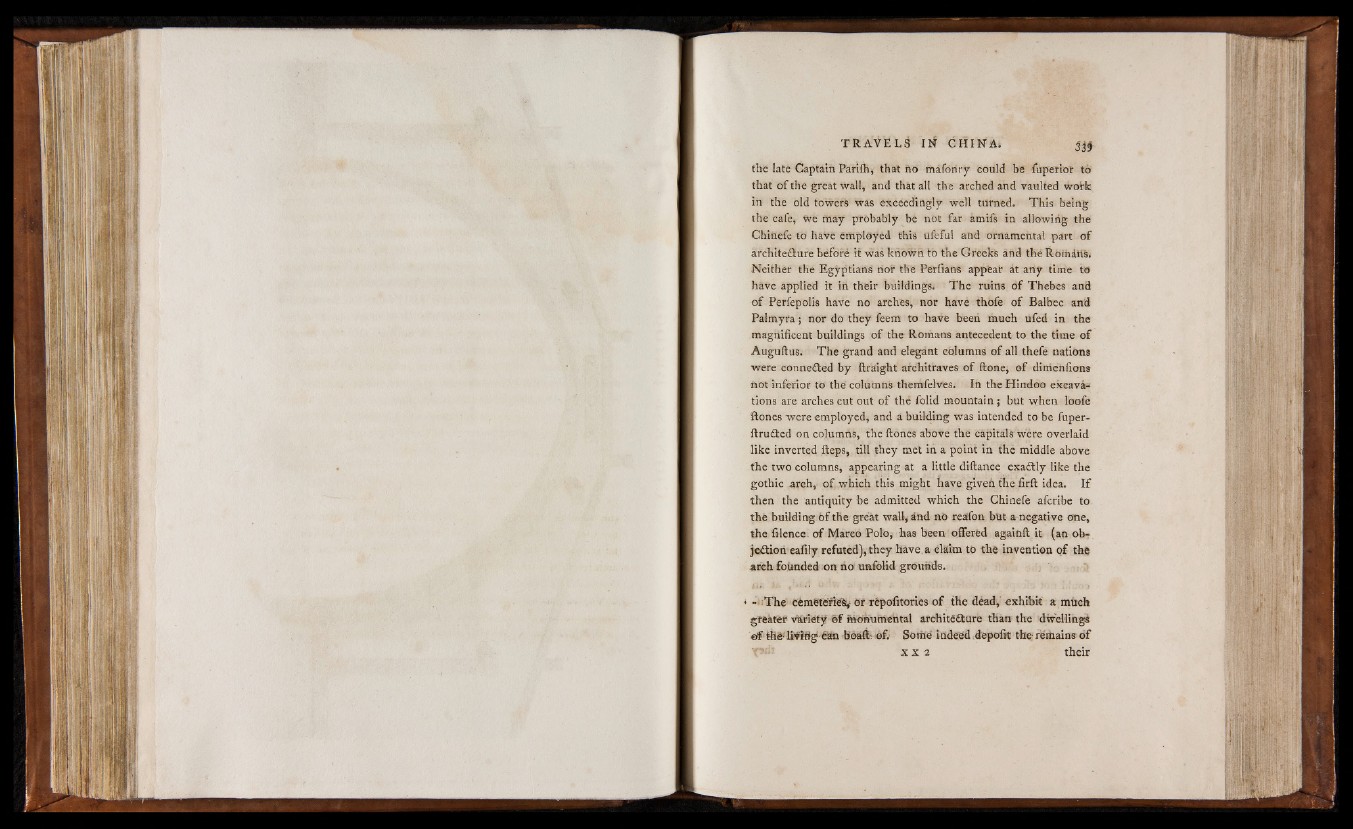
the late Captain Pariih, that no mafonry could bé fuperior tò
that o f the great wall, and that all the arched and vaulted wotfc
in the old towers was exceedingly well turned. This being
the cafe, we may probably be not far amifs in allowing the
Chinefe to have employed this ufeful and ornamental part o f
architecture bèforé it was knoWh tb the Greeks and thé Româtts.
Neither the Egyptians' not the PérfianS appbar àt any time to
have applied it in their buildings. The ruins 6 f Thebes and
o f Perfepolis have no arches, nor have thofe o f Balbec and
Palmyra ; nor do they feeffl to have been much ufed in the
magnificent buildings o f the Romans antecedent to the time o f
Auguftus. The grand and elegant columns o f all thefe nations
were connected by ftraight architraves o f ftonej o f dimcnfions
not inferior to the columns themfelves. In the Hindoo escavai
tions are arches cut out o f thé folid mountain ; but when loofe
ftones were employed, and â building was intended to be fuper-
ftruCted on columns, the ftones above thé capitals were overlaid
like inverted fteps, till they met in a point in thé middle above
the two columns, appearing at a little diftance exactly like the
gothic areh, o f which this might have given the firft idea. I f
then the antiquity be admitted which the Chinefe afcribe to
the building 6 f the great wall, dnd no reafon but a negative erne,
the filence. o f Marco Polo, has been offered againft it (an objection
eafily refuted), they have a claim to the invention o f the
areh foünded on no uafólid grounds.
* di ¡The' eémëtefiëfeÿ ot rèpofîtories o f the dead,' exhibit a mhch
gteàtèf vitrîetÿ Of mohumebtal architecture than the dvfellingi
e f tfle liViflg Cito boaffi- Of. Some indeed depofit the- remains o f
x x 2 their